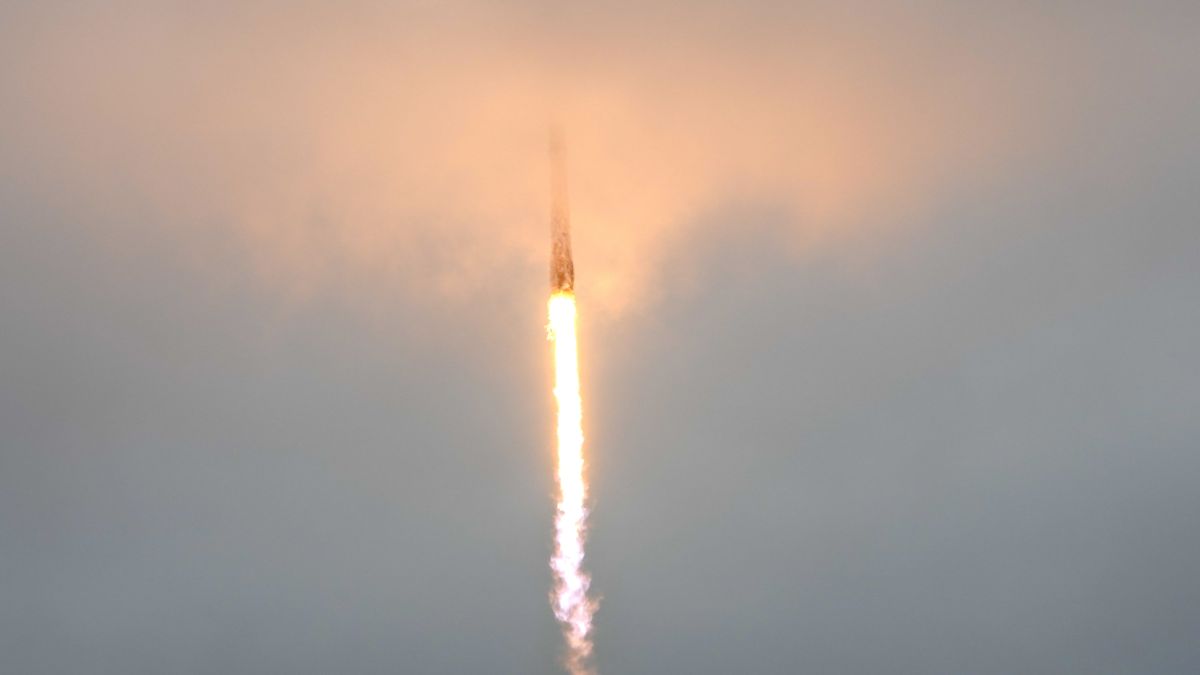Elon Musk’s SpaceX has launched India’s GSAT-N2 communication satellite.
Radhakrishnan Durairaj, chairman and managing director of New Space India Limited, the commercial arm of the Indian Space Research Organisation (Isro) was quoted as telling NDTV that the satellite has been placed in a precise orbit.
The aim behind sending it to space is to meet India’s broadband needs.
But what do we know about the satellite and the mission?
And why is India issuing Elon Musk’s SpaceX and not the Indian Space Research Organisation?
Let’s take a closer look:
The satellite and the mission
The GSAT-N2 is a high throughput Ka-band satellite.
As per Economic Times, it is the latest in a series of GSAT satellites.
The GSAT-N2 was developed by the state-owned New Space India Ltd (NSIL).
A commercial arm of Isro , the NSIL is responsible for funding and operating the GSAT-N2.
As per India Today, the satellite has a mission lifespan of 14 years.
Deployment of @NSIL_India GSAT-N2 confirmed pic.twitter.com/AHYjp9Zn6S
— SpaceX (@SpaceX) November 18, 2024
Isro chairman S Somanath told The Times of India, “SpaceX’s Falcon-9 will launch Isro’s Gsat-20, also called GSAT N-2, on November 19.”
The satellite weighs 4,700 kilos.
This satellite will deliver high-speed broadband internet connectivity and digital video and audio transmission.
As per NDTV, the GSAT-N2 is India’s most advanced satellite.
The advanced Ka band frequency – which is a range of radio frequencies between 27 and 40 gigahertz (GHz) – allows the satellite to have higher bandwidth.
The GSAT-N2 offers Ka-band HTS capacity with 32 beams having pan-India coverage including in Andaman and Nicobar and Lakshadweep islands.
Of these, eight narrow spot beams will be over the Northeast and the others will be over the rest of India.
The beams will be supported by hub stations located on the mainland.
Dr M Sankaran, director of UR Rao Satellite Centre in Bengaluru, told the outlet, “GSAT-20 is India’s highest throughput satellite.”
Eighty per cent of the GSAT-N2’s capacity has been sold to a private player.
The remaining 20 per cent will also be sold to private players in the aviation and maritime sectors, as per NDTV.
As per Economic Times, the GSAT-N2 will give a fillip to the Centre’s ‘Smart City’ initiative.
It will also help facilitate internet connectivity on planes.
Why is India using SpaceX?
Because of the satellite’s immense weight.
The Isro’s Launch Vehicle Mark-III (LVM3) satellite, which is the Indian space agency’s ‘well-proven and reliable heavy lift launcher,’ can carry communication satellites weighing up to 4 tonnes into geosynchronous transfer orbits (GTO).
The LVM3, known as ‘Bahubali’ or ‘Fat Boy,’ can also lift off a payload of up to 8 tonnes into low earth orbit (LEO).
The LVM3 recently launched the Chandrayaan-3 mission on its lunar journey.
Before that, the rocket was used to launch the Chandrayaan-2 spacecraft in 2019.
The Falcon 9 rocket, on the other hand, can deliver a payload of 8 tonnes into GTO, as per Economic Times.
According to NDTV, this will be the NSIL’s first launch with SpaceX.
It paid the Musk-owned company Rs 500 crore for the launch.
Isro previously used France’s Arianespace to launch its biggest satellites.
However, Arianespace currently has no commercial slots available for Isro to book.
This is because the company put its Ariane-5 rocket out to pasture last year, while the slots for the Ariane-6 have already been reserved.
India does not consider using China’s commercial services, while Russia is engulfed in the war with Ukraine.
This leaves SpaceX the only viable option, as per Economic Times.
The state-owned NSIL earlier launched the GSAT-24 in June 2022.
The GSAT-24’s full capacity was booked by satellite television service Tata Play.
Isro is currently developing its Next Generation Launch Vehicle (NGLV) – which will help it launch satellites over 4 tonnes.
The NGLV, at a budget of Rs 8,240 crore, will triple the LVM3’S payload capacity.
This, at a price point of 1.5 times more than the LVM3.
The NGLV will have a reusable first stage.
It will able to put 30 tonnes in LEO and 10 tonnes in GTO.
With inputs from agencies


)

)
)
)
)
)
)
)
)



